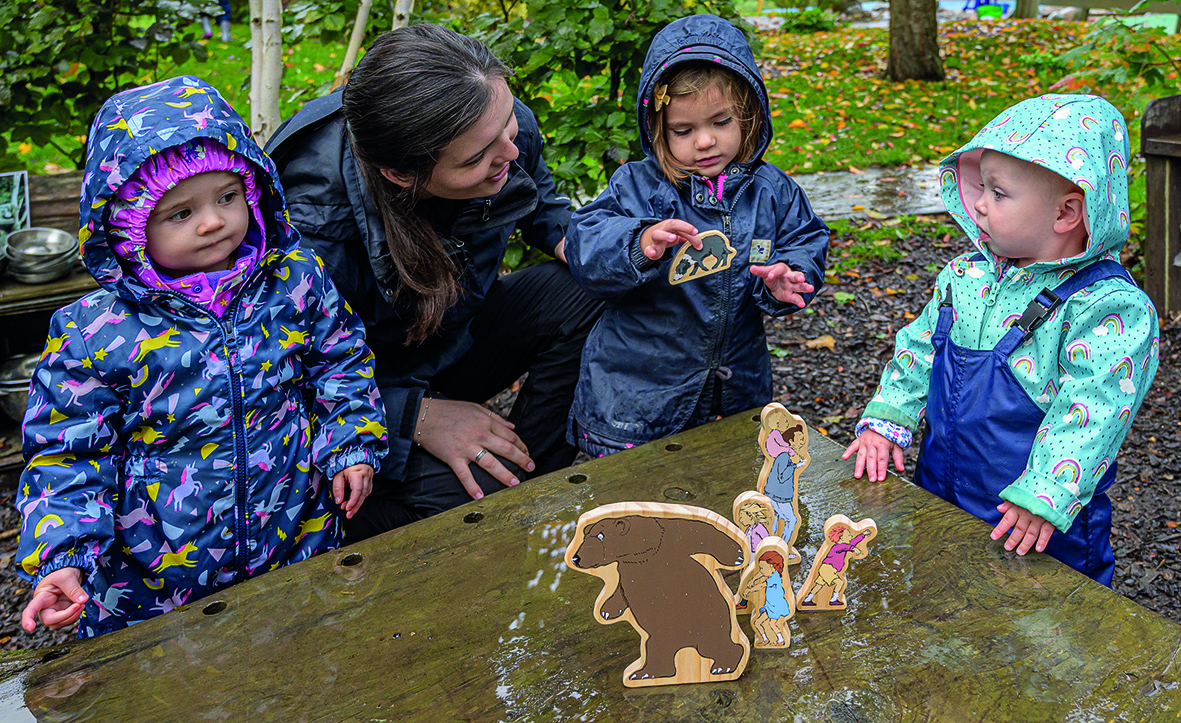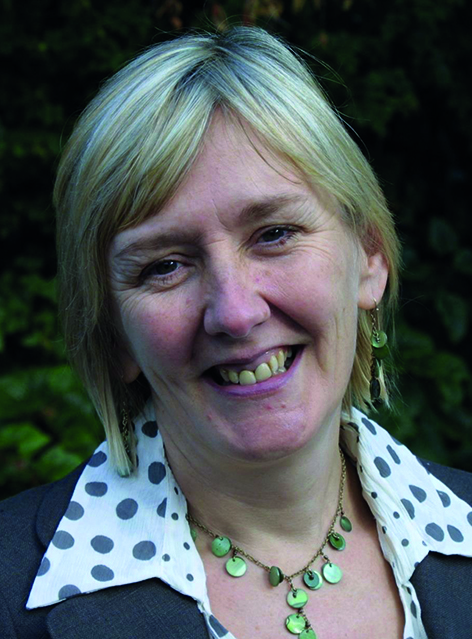
When a refugee child was struggling to settle at a nursery, early years trainer Helen Bromley made what she called a ‘storybox’ designed to reflect her experiences, choosing resources which would reflect the gritty reality of what she had experienced. Recounting the story, her friend Dr Sue Allingham says, ‘Once the practitioner realised it was OK to create a box with toy soldiers and tanks, the little girl began to open up, describing to the adults, through the toys that she played with, what was happening to her – even though she didn't have the language to support it. She could talk about this because it was “real” and it was happening to her.’
Bromley was a practical pioneer – she worked with educational suppliers to develop resources that reflected her sound pedagogical teachings, often championing popular culture and the role it plays in children's language and communication. The concept of ‘storyboxes’, for example (a small world in a box, usually related to either a theme or a storybook) was one which was developed by resources company Yellow Door. Company owner Carole Mills worked with Bromley to develop a range of educational resources to inspire early communication, language and literacy.
Reminiscing about her friend, she says, ‘She could be very uncompromising – but in a good way. We developed storyboxes – wooden superhero figures and alphabet pebbles, among other resources – and they were true to what Helen believed in. For example, the artwork of the storyboxes was designed to be suggestive rather than prescriptive so that rather than a nature story box having mountains and ponds in the background, children were provided with fabric and figures so that they could make their own scenes.’
Although thestoryboxes have now been discontinued, Yellow Door's extensive collection of small-world play resources were inspired by the early days of storyboxes, Mills says.
As for the adult-created picture-perfect play scenarios that adorn today's tuff spots and are posted on social media, Dr Allingham says Bromley would ‘have a fit’ if she saw some of today's practice.
‘She’d have hated all of the tuff spots with fairy lights, rugs and artificial grass stuck all over them, because it's not real,’ she adds.
‘She’d want children to create setups that may or may not be beautiful but come from their imaginations,’ Mills says. ‘She was always thinking about rich language opportunities. Rather than the trend for beige, she’d want colour, texture and rich sensory experiences that would stimulate as much story language as possible.’
COMMUNICATION AND LANGUAGE
 Bromley believed that if children are going to talk, the resources on offer must be relatable to them. And the adults around them should value and respect all their interests.
Bromley believed that if children are going to talk, the resources on offer must be relatable to them. And the adults around them should value and respect all their interests.
Mills says, ‘She believed that the knowledge children brought into the setting was often overlooked by predominantly female early years teachers, unaware of how much language the children actually had because they were not talking about their interests. So we developed football and superhero resources, to help teachers draw out conversation.’
For children who use media-related toys in their play, Bromley told Nursery World in 2009 that sensitive practitioners would ‘work with these interests’, and use them to make links to a greater variety of texts.
‘This might begin with something as simple as putting a selection of Thomas the Tank Engine comics near to the train set, along with some attractive picture books about trains. In this way, the child's interests are respected and valued, but they also have an opportunity to enrich their experiences with texts that build on their prior knowledge,’ she added.
Bromley developed the idea for storyboxes around the time that Ros Bayley and Sue Palmer wrote Foundations in Literacy, which looked at the importance of language and listening skills prior to learning phonics. She trained practitioners across the country in the use of storyboxes for promoting literacy.
MAKE YOUR OWN STORYBOX
According to Bromley's instructions for a superhero storybox to accompany the Yellow Door Superhero Wooden Character set:
- Use an empty shoe box, cutting it so that one long side – or one long side and one short side – of the box folds down.
- With the children, create a scene on the inside of the box on the remaining three sides. Add stars and planets, perhaps, or the New York skyline; anywhere that a superhero might be found.
- Add a superhero family or two, from Yellow Door's double-sided multicultural set of Superhero Wooden Characters, £45, where three families can transform from their everyday personas to their superhero alter egos.
- Include additional props – decorative spheres to represent planets or small model buildings.
- Make laminated photographs of the children available so that they can have an adventure in the storybox too.
- Cover the lid with suitable themed wrapping paper.
- Make time to observe and listen as the small world is created; listening out for mathematical and scientific language as well as the story openings, character descriptions and dialogue that naturally takes place.
- Encourage children to tell their stories to you and each other.
- Ensure that paper, mark-making materials and ready-made books are available for children who want to create written versions of their stories.
- Offer to scribe some stories for the children. They will always be able to dictate a story that is of greater complexity than they can write.

SMALL-WORLD PLAY RESOURCES TO BOOST LANGUAGE
- Try Yellow Door's Little People – Sensory Play Set of 9 figures, £22, or prop up backdrops for small-world play in its set of 5 Stand-It Stones, £12.50. Bring traditional tales to life with its Let's Boost Language through Stories Kit, £185, with classics like Goldilocks and the Three Bears and The Three Little Pigs.
- Cosy's Three Bears Rustic Role Play set, £19.99, is a miniature version of the classic tale, complete with chairs, beds, a table and porridge bowl. Or try creating realistic small-world scenes with Cosy's Real Life – Community Places, 16pk, £19.99; create arctic habitats with its Arctic Animals, 24pk, £24.99.
- TTS's Early Language Development Story Bundles, £109.99, contain wooden figures representing the animals that appear in the story; speech and language activities and lolly stick puppets in a drawstring bag. Or try the Early Soundplay Bundles from £84.99, a collection of books and resources brought to life with wooden characters and audio content narrated by British actor Sophie Thompson.
- Support children's early story-telling skills with Early Excellence's ready-made Fairy Gardens Collection, £125. Combine role-play, writing and drawing with the Chalkboard People, £17.99, from Hope Education, a great blank canvas for creating characters for small-world play scenarios.
PEBBLE POWER
Yellow Door's Alphabet Pebbles, £24 for 26 lowercase letters, is one of Bromley's original ideas. ‘She was always looking for playful ways to introduce children's letters that would feel natural and part of that outside world. She knew that children were drawn to sorting and collecting stones and were fascinated by them,’ Mills says.
Childminder Sam Goldsworthy from Helston, Cornwall, uses the pebbles in her Forest School sessions. ‘They’re durable and weather-proof and really tactile. We use them in sand, water, snow powder and mud. We often place them on invitation trays for children to explore different items like sand, seeds, mud for making bird pizzas, along with the “r” phonic for robin, along with the book Good Morning Mr Robin.’
Helen Bromley: championing relatable resources
 When early years consultant Helen Bromley died of cancer in 2013, she left behind ‘a big hole’, according to Dr Sue Allingham, her long-term colleague and friend. Bromley's open, friendly manner and no-nonsense, common-sense approach made her a magnet for many teachers who she trained in the late 1990s. When she wasn't touring the country, she was putting her thoughts on paper, writing for Nursery Worldabout collections of resources, small-world play or literacy – her speciality.
When early years consultant Helen Bromley died of cancer in 2013, she left behind ‘a big hole’, according to Dr Sue Allingham, her long-term colleague and friend. Bromley's open, friendly manner and no-nonsense, common-sense approach made her a magnet for many teachers who she trained in the late 1990s. When she wasn't touring the country, she was putting her thoughts on paper, writing for Nursery Worldabout collections of resources, small-world play or literacy – her speciality.
Bromley was known for her straight-talking, her principles and her passion for championing children most in need. Not afraid to point out that early years teachers with long manicured nails do not mix well in the mud and ‘might as well work at Tesco’, or that teaching a letter, colour and a number a week was ‘nonsense’ because it is out of context – along with her dislike of synthetic phonics – she was outspoken ‘in a good way’. Dr Allingham, says, ‘Helen inspired me to become an independent early years consultant and I’ve modelled my professional career on her. She was a huge advocate for supporting children's play through real-life experiences. She hated anything synthetic. “Where would the fairies play in AstroTurf?” she would ask. She was all about using resources that had real-life meaning.’









